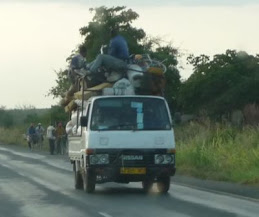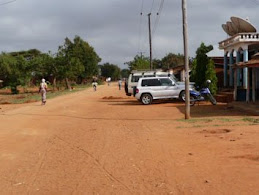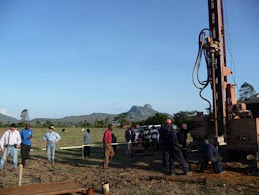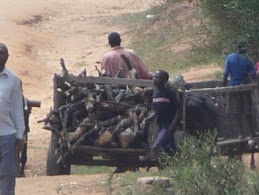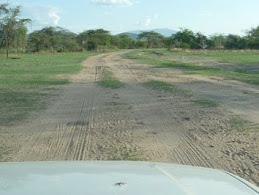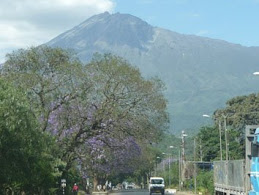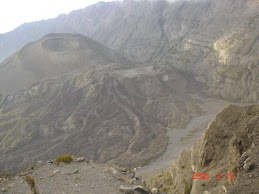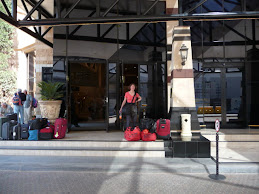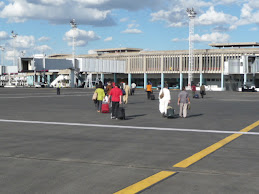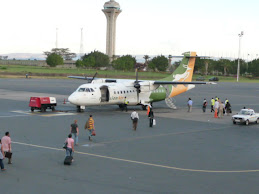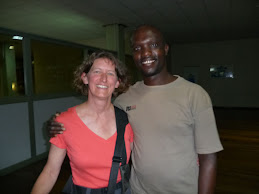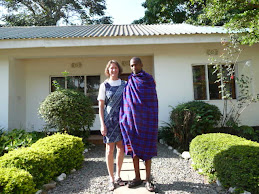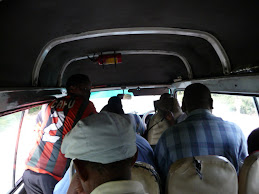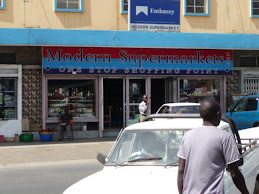Introduction
During a volunteer work assignment in Tanzania, East Africa, we came to the following realisations while working in rural Tanzania. Three issues seemed to jump out as the most important issues causing problems in rural regions. These issues are lack of water, deforestation and over population. Some of these issues impact only the local people and economy while other facets stemming from them will impact us all as a whole. Each problem issue is not an independent topic. They are quite interrelated and providing development aid to address one and not the others is more than likely not going to solve any of Tanzania’s problems, but just extend them to more dire times. They need to be jointly addressed as time is running out and before we realise it, we will have allowed the rural life style to replace a national heritage and international treasure of large game animals and forests for livestock consisting of predominantly cows and goats on bare lands.
Water is a very scarce resource in many places in rural Tanzania. While this may not be new news to many people, there are complimentary factors associated with this that do affect us all. Why is water a scarce resource? This may be a question that is not often asked. When it is asked, the typical answer we expect to hear is ‘there is no water there’. However when considered in a bit more in depth one may ask; does this mean there is no water in Tanzania, no water in that region or no water at an individual villager’s house, as these are very different questions.
In the western world the establishment of locations for people to live is generally governed by the location of developments. New suburbs are planned then roads and infrastructure utilities (water, electricity, phone, gas, cable, internet etc) are installed. Finally houses are built for people to occupy. Or in rural situations, people build their houses along already established corridors or primarily sealed roads. This puts them in close proximity to electricity, phone lines, and mail runs. In Tanzania, the reverse has happened. The people have been living here for so long that the locations of villages and houses were established long before the advent of utilities services and modern roads into the country. Or in many areas, the government has contributed very little in the way of infrastructure for its people and so the villagers have created their own community set ups. What this means is that there are few corridors along which utilities could now be run that would service many people. The people live in small villages of 10-300 houses all interconnected by dirt walking paths and wider dirt trails for oxen drawn carts on which to travel. The villages are scattered like a shot gun blast across the country side. In any one direction there is another village just a few kilometres away. To now consider installing services to these people would mean installing a large spider web-like pattern of utilities across the land. The infrastructure expense would be enormous. The villagers are generally farmers of animals or crops. For the most part they grow enough to feed only their family with little left over. There is very little cash available for these people. They would be unable to pay for any infrastructure costs and probably not even be able to pay the cost of the utility if it was to be provided to them.
For this reason water is only available at discrete locations called water points. Some water points are within a village and some are many kilometres away. The women who fetch the water collect it in 20 litre plastic buckets. This makes the very familiar picture of African women walking along with a bucket on their head. For some villages the water may be stored in a tank on high ground and then gravity fed to faucets spaced throughout the village. This relies either on the tank being full all the time or on a village officer who rations the water supply to a limited number of days per week. For others, the water points are hand pumps over water bores and the villagers are required to pump to fill their buckets. The access to the pump may be on a ration basis also depending on the amount of water the well can yield and the number of people using the well. It some places the villagers are limited to 60 litres of water for 2-3 days. This has to serve their whole family.
Water rationing from water points causes other water collection habits to be undertaken. These include rain water harvesting off roofs which is unreliable or impractical for many villagers living in a mud brick house with a thatched roof. They do not have the means to buy a tin roof, spouting and collection tanks. Hence more dire practices are performed such as scooping water out of puddles in the dirt roads after a rain fall, digging catchment pits in the dirt to collect rain runoff and using any local streams for water supply and washing. These streams are shared with livestock so the water is prone to contain various diseases.
While the current role of Non Governmental Aid Organisations (NGOs) is to provide aid to poor people, one should understand first there is a bigger water picture than just giving some people access to water. The efficiency of an NGO to mobilize a well drilling crew and provide administration for the water project to install a small number of water wells in a village must be quite low. By doing this they are providing only for the concerns of a small number of local people, and not considering what if their aid money was pooled first. It could then be more efficient to install some of the above mentioned larger scale water supply infrastructure and provide a greater volume of water to more people for a similar cost. Some people may say this is the role of the government through a utility. But governments in many African countries run very different to western governments. First the governments are poor as their income from a tax base is only a fraction of what it is meant to be, due to many business being a simple cash based entity with little or no reporting of taxable income. Second there is corruption at many levels in government and what fraction of the taxes that are collected are reinvested back in the country is simply unknown. (There is hope here that with the younger generations getting better educated that corruption will be significantly reduced in the future).
If only the issue of providing water is addressed then we are encouraging the people to continue their current societal practices. With the people living in these small scattered villages, there are a whole host of other issues for them in addition to water issues. Like water there can be no practical supply service for power to be provided to their dwellings, be it electricity or gas. The consequence of this is the people are forced to gather their own fuel for their cooking requirements. The most common fuel that seems to be used is fire wood. One has only to spend a day or two driving around these villages to see the level of deforestation that is being performed. Compounding this is the western experts telling the villagers to boil their water before drinking it. This is another energy intensive operation. Every day women can be seen walking along the dirt trails with a bundle of sticks on their head, or if it is a bigger branch, then maybe a single large piece of wood on their head. They can often be seen hacking down branches of larger trees to take home. There is a whole industry of young men cutting down trees in the forests along the side of the road, then converting the wood to charcoal and selling it in large bags that they stack up along the roadside for sale to anyone who passes by. The men just go back into the bush off the road and cut down the trees then cut them up into smaller pieces for the buyer to use in their cooking. The bags are quite big and heavy so often seen being transported on bicycles. Bicycles are used more for transport of heavy loads than commuting. The rider then pushes the bike with its load on the back as it is too unstable to ride. Sometimes there are 2 of these large bags on a bike which makes for a very large load. Less frequently one can see whole acreages cleared with the stacked up logs and branches ready for moving away. Most of the forest here is small trees or scrub so there is little construction quality or size wood available. There are some low quality fences around houses or stock pens that are made from some of these branches.
There are few countries in the world that at some time or another have not cleared forest to claim the land for other purposes. What is obvious in Tanzania is the rate at which this is still occurring, when there are many examples of the consequences over deforestation and the desertification of lands available. Some are as close as countries not too far north of its border. At the village level, there has been little education provided to the people to show them how to grow sustainable forests. Instead the villagers cut down most of the surrounding trees then start walking further afield every day to get more and more wood. As they walk further afield clearing bush they are pushing the natural wild life back as well. Once the land has been cleared, it is then kept cleared by the grazing of herds of cows and goats by the stock farmers in the village.
The third issue that is a big factor for the rural villagers and their life style is the belief still that they need to have large families of many children. Families of 10-14 children are common. Even though the death rate is around 40% for children up to age 5, there are still many large families. Many villages condone polygamy with 2, 3 or 4 wives, with whom the father has multiple children. This large family practice has also encouraged single women, often before marriage, think they need to have children. Spending some time in a village, one can readily see the number of single parent households, with a mother and several children but no father. Some of the mothers are in their mid teens.
There appears to be no contraception education in the rural areas and even if there was, it would be unlikely the people could afford it. Offering free contraceptives like condoms will have little impact due to distribution problems, embezzlement of funds or stock, and due to lack of education. Rumours like “condoms cause infertility” can also destroy any successful campaign. While working in these villages, one sees women at work getting water or firewood, and often half of them will be carrying a baby in a kanga on their backs.
Like the West, the people living in larger cities are better educated and women are making active decisions for their own family planning. Families are smaller, and the children are being better educated. Their rural cousins however, have little education that the West would consider a proper education beyond basic reading and writing. The consequences of this are poverty breeding poverty in large numbers and the percentage of the population of the educated part of society is shrinking. Scattered rural villages, very basic living conditions and poor road systems, that hinder inter-village travel and travel to larger more modern metropolitan areas, lead to another problem which keeps the villagers suppressed even more. It is asking a lot from a teacher, who has been educated in a more modern town, to then give up that life style and what luxuries they did have to live in these remote villages on a very minimal salary, with often tough living conditions. Therefore the quality of the teachers in many of these villages seems to be very low and the children are the first ones who suffer from this. Next the land suffers as the children grow up with a poor education. They basically do what their parent(s) did, which is have large families and clear land for crops or grazing of livestock.
In the 1970s Tanzania had 20 million people, now in the 2000’s it has 40 million. This is a huge burden increase on the land and its resources and little is being done to address this issue. Every time another son is born, there is potential for them to grow up to become a stock herder and have their own herds of cows and goats. If, for example, one shepherd has 20 cows and goats, then in a family of 10 children it could mean the land of that village has to support another 100 cows and goats for the sons of just that one family. Plus more cleared land is needed to grow additional crops to feed this increasing population. This can only go on for so long before the lands are overgrazed so hard that it starts to become very barren – almost desert like. The farmers have to move away from home to find new lands to clear and live on for their crops and livestock. This happens over and over again with the population being forced to spread out while the current land is left in a very poor state for the elder family members to eke out a living. As the people spread out and as populations increase, more and more water and fuel resources are needed. This is partially the reason for the unending demand for water supplies and deforestation is rampant.
Global warming is often attributed to the desertification of lands these days, but in many areas the overpopulation of people and their livestock herds is the driving factor. High temperatures and scouring of lands by flooding caused by unstable weather patterns are just the finishing touches to a problem already created.
The natural bush is home to a large diverse range of the big wild animals and fauna. Tanzania was particularly blessed with one of the largest selections of big animals in the world. The more the bush lands are destroyed, the less numbers of these animals the land can support. According to a recent National Geographic program, elephant numbers are at 1% of what they were in earlier days. Lion numbers are down 30 to 60%, and gorillas are down 70% in just the last 10 years alone.
Tanzania has the potential to rank very high on the list of tourist destinations. However, unless the current trends are addressed and addressed quite quickly in terms of deforestation rates, then the attraction Tanzania has for international tourists will be permanently gone. This will be a sad day for the tourists, the Tanzanian people with the loss of revenue and a sad day for the world as a whole. The never ending debate of who owns a valuable resource with world importance, such as the Amazon forest or the big game animals in Africa, is a topic that will not be resolved anytime soon. The resolution may only come after it is too late and the resource has declined to such a small state that the consequence to the world for its loss will be irreversible. The world will then be a changed for the worse.
Overgrazing not only destroys large parts of the country, but brings in little income for the government to develop the country. Some really hard questions need to be asked: “Which has more importance, the grazing rights for goats and cows of an expanding population or the large scale protection of these lands for some of the most unique large animals in the world and the associated tourist money this resource can bring in?” and “Who answers this question, the government, the indigenous people or the world community?”
It could be argued that the government is already doing something about this by setting aside areas as national parks and charging high entry fees to raise money from the tourists. However these parks have already been established for many years and the human population has grown considerably throughout this time. It is only a matter of time before there are no bushlands left outside of park boundaries. Once this happens, these parks will be under an unstoppable threat of encroachment by the demand for domestic animal grazing. To do nothing now but continue on the current path means that charging park fees probably won’t be a long term solution and it will lead to the loss of these habitats and eventually the big animals.
The world community needs to appreciate the threat it is facing at this time and engage the problem head on. Otherwise it will be left to the local community and the current non aligned approach of thousands of NGOs competing for money to do their own projects, using aid money that donors provide believing it is being put to good use, when actually it may be exacerbating the problem.
If we do not address the three issues of water shortage, deforestation & overpopulation simultaneously, then what we, as the world community are doing, is allowing our future treasures to be traded away or simply put, trading Lions for Cows. One could argue the future is here now, for when driving in Tanzania, one sees road warning signs announcing the presence of big game being replaced with road warning signs alerting to the presence of livestock.
Subscribe to:
Comments (Atom)
































































































































